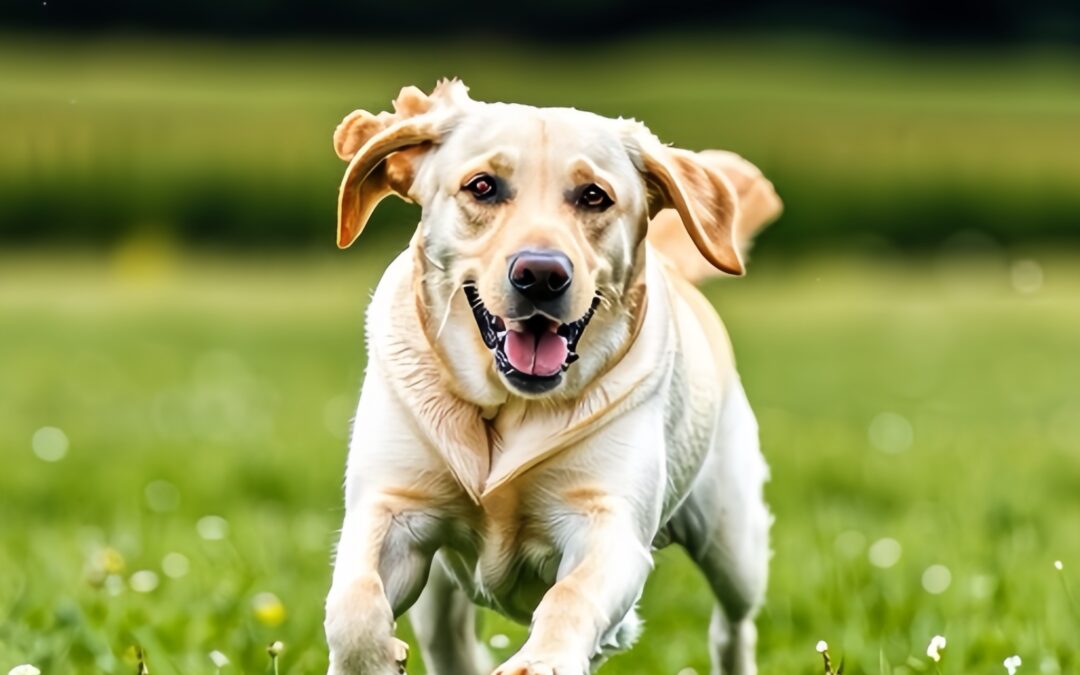
por TCMVET | 27 de junho de 2024 | Câncer e tumores caninos
Quando o seu querido cão é diagnosticado com câncer, é natural que você queira fazer todo o possível para garantir seu conforto e saúde. Uma questão que surge frequentemente é se o seu ambiente de vida requer uma desinfecção especial. Embora manter um espaço limpo seja crucial para todos os animais de estimação, os cães com câncer podem se beneficiar de algumas medidas adicionais. Aqui está o que você precisa saber.
Compreendendo a importância de um ambiente limpo
Um ambiente limpo é essencial para a saúde geral e o bem-estar do seu cão. Para cães com câncer, seu sistema imunológico fica frequentemente comprometido, tornando-os mais suscetíveis a infecções. Manter um espaço higiênico pode ajudar a minimizar o risco de infecções secundárias, o que pode complicar o tratamento e o processo de recuperação.
Por que a desinfecção especial pode ser necessária
- Sistema imunológico enfraquecido: O câncer e seus tratamentos, como quimioterapia e radiação, podem enfraquecer o sistema imunológico do seu cão. Isso os torna mais vulneráveis a infecções por bactérias, vírus e fungos.
- Feridas abertas e locais de cirurgia: Se o seu cão foi submetido a uma cirurgia ou tem feridas abertas, essas áreas estão sujeitas a infecções. Um ambiente limpo ajuda na cura mais rápida e reduz o risco de infecção.
- Efeitos colaterais da quimioterapia: Alguns medicamentos quimioterápicos podem causar efeitos colaterais como vômitos e diarreia, que podem contaminar o espaço onde vivem. A limpeza regular ajuda a manter a higiene e o conforto do seu cão.
Dicas para manter um ambiente limpo
- Limpeza Regular: Limpe regularmente a roupa de cama, os brinquedos e as tigelas de comida e água do seu cão. Use desinfetantes suaves e adequados para animais de estimação para evitar a exposição do seu cão a produtos químicos agressivos.
- Higienize áreas comuns: concentre-se nas áreas onde seu cão passa mais tempo. Pisos, carpetes e móveis devem ser aspirados e limpos com frequência para remover poeira, cabelos e possíveis alérgenos.
- Controle de umidade: Altos níveis de umidade podem promover o crescimento de mofo e bolor, que podem ser prejudiciais à saúde do seu cão. Use desumidificadores, se necessário, para manter um nível de umidade confortável e seguro.
- Qualidade do ar: Garanta uma boa ventilação em sua casa. Use purificadores de ar para reduzir patógenos e alérgenos transportados pelo ar.
- Higiene das mãos: Pratique uma boa higiene das mãos. Lave as mãos antes e depois de manusear seu cão, especialmente se estiver administrando medicamentos ou limpando feridas.
Soluções de desinfecção seguras para animais de estimação
Ao escolher desinfetantes, é importante selecionar produtos que sejam seguros para animais de estimação. Aqui estão algumas opções:
- Solução de vinagre e água: Um limpador natural e eficaz que pode ser usado em diversas superfícies.
- Peróxido de hidrogênio: Útil para desinfetar superfícies não porosas e seguro para áreas de animais de estimação.
- Desinfetantes comerciais seguros para animais de estimação: Existem vários produtos projetados especificamente para ambientes de animais de estimação que são eficazes e seguros.
Equilibrando Limpeza e Conforto
Embora manter um ambiente limpo seja crucial, é igualmente importante garantir que o processo de limpeza não estresse o seu cão. Evite usar produtos químicos com cheiro forte ou criar uma rotina de limpeza barulhenta que possa incomodar seu animal de estimação. Esforce-se para obter um equilíbrio que mantenha a limpeza sem comprometer o conforto e a paz do seu cão.
Garantir um ambiente limpo para um cão com câncer envolve limpeza regular e o uso de desinfetantes adequados para animais de estimação. Dado o seu sistema imunitário comprometido, uma atenção especial à higiene pode ajudar a prevenir infecções e apoiar a sua saúde geral. Ao seguir essas etapas, você pode criar um espaço seguro e confortável para seu amigo peludo durante o tratamento e recuperação.

por TCMVET | 27 de junho de 2024 | Câncer e tumores caninos
A inflamação crônica é um problema de saúde persistente e muitas vezes despercebido que pode ter consequências graves para nossos companheiros caninos. Uma pesquisa recente destacou a ligação potencial entre a inflamação crônica e o desenvolvimento de câncer em cães. Compreender esta ligação é crucial para os donos de animais de estimação que desejam tomar medidas proativas para garantir que os seus cães tenham uma vida longa e saudável.
O que é inflamação crônica?
A inflamação é a resposta natural do corpo a uma lesão ou infecção. É uma parte vital do processo de cura, pois ajuda a isolar e remover estímulos nocivos e inicia o processo de cura. No entanto, quando a inflamação se torna crónica, pode causar mais danos do que benefícios. A inflamação crônica é caracterizada por uma resposta inflamatória prolongada que pode durar meses ou até anos. Este estado de alerta contínuo pode levar a danos nos tecidos e contribuir para o desenvolvimento de diversas doenças, incluindo o cancro.
Como a inflamação crônica leva ao câncer
A ligação entre inflamação crónica e cancro está bem documentada na medicina humana e é cada vez mais reconhecida na medicina veterinária. A inflamação crônica pode levar ao câncer de várias maneiras:
- Danos ao DNA: A inflamação persistente gera radicais livres, que podem danificar o DNA. Este dano pode causar mutações que podem levar ao crescimento de células cancerígenas.
- Proliferação celular: A inflamação crônica geralmente leva a um aumento na proliferação celular à medida que o corpo tenta reparar os tecidos danificados. Essa constante renovação celular aumenta a probabilidade de mutações e crescimento canceroso.
- Supressão do sistema imunológico: A inflamação prolongada pode enfraquecer o sistema imunológico, reduzindo sua capacidade de detectar e destruir células cancerígenas.
- Mudanças no microambiente: A inflamação pode alterar o microambiente do tecido, tornando-o mais propício ao desenvolvimento do câncer.
Causas comuns de inflamação crônica em cães
Vários fatores podem contribuir para a inflamação crônica em cães, incluindo:
- Infections: Infecções persistentes, como aquelas causadas por bactérias, vírus ou parasitas, podem causar inflamação crônica.
- Doenças autoimunes: Condições em que o sistema imunológico ataca os próprios tecidos do corpo podem causar inflamação a longo prazo.
- Alergias: As reações alérgicas crônicas podem levar à inflamação contínua.
- Obesidade: O excesso de peso pode contribuir para a inflamação no corpo.
- Toxinas Ambientais: A exposição a poluentes e produtos químicos pode desencadear respostas inflamatórias.
Sinais de inflamação crônica
A detecção precoce da inflamação crônica pode ajudar a prevenir sua progressão para câncer. Os sinais comuns incluem:
- Letargia: Níveis de energia reduzidos e aumento do sono.
- Perda de apetite: Relutância em comer ou redução da ingestão de alimentos.
- Perda de peso: Perda de peso inexplicável apesar dos hábitos alimentares normais.
- Infecções persistentes: Infecções frequentes e difíceis de tratar.
- Inchaço: Áreas do corpo que estão persistentemente inchadas ou inflamadas.
Prevenção e Gestão
Prevenir e controlar a inflamação crônica é fundamental para reduzir o risco de câncer em cães. Aqui estão algumas estratégias:
- Check-ups veterinários regulares: Visitas veterinárias de rotina podem ajudar a detectar precocemente sinais de inflamação crônica.
- Dieta saudável: Alimentar seu cão com uma dieta balanceada, rica em nutrientes antiinflamatórios, pode ajudar a controlar a inflamação.
- Controle de peso: Manter seu cão com um peso saudável reduz o risco de inflamação.
- Exercício: A atividade física regular ajuda a manter um sistema imunológico saudável.
- Minimize a exposição a toxinas: Reduza a exposição do seu cão a toxinas e poluentes ambientais.
Soluções Antiinflamatórias Naturais
Além dos tratamentos convencionais, os remédios naturais podem ajudar a controlar a inflamação crônica:
- Ácidos gordurosos de omega-3: Encontrado no óleo de peixe, o ômega-3 tem propriedades antiinflamatórias.
- Cúrcuma: Contém curcumina, composto conhecido por seus efeitos antiinflamatórios.
- Suplementos de ervas: Certas ervas, como gengibre e boswellia, podem ajudar a reduzir a inflamação.
A inflamação crônica é um sério problema de saúde que pode levar ao câncer em cães. Ao compreender as causas e os sinais da inflamação crônica, os donos de animais de estimação podem tomar medidas proativas para controlar e prevenir esta condição. Cuidados veterinários regulares, um estilo de vida saudável e remédios antiinflamatórios naturais podem desempenhar um papel importante na manutenção da saúde do seu cão e na redução do risco de câncer.
Mantenha-se informado e proativo sobre a saúde do seu cão. Reconheça precocemente os sinais de inflamação crônica e consulte seu veterinário para saber as melhores estratégias para controlar e prevenir essa condição. Sua diligência pode fazer uma diferença significativa na qualidade de vida e longevidade do seu cão.

por TCMVET | 22 de junho de 2024 | Pesquisa e Notícias
Introdução
Câncer é uma palavra assustadora para qualquer dono de animal de estimação. No entanto, compreender e reconhecer os sintomas precocemente, juntamente com a adoção de medidas de tratamento adequadas, pode melhorar significativamente as chances de sobrevivência de um cão. Este artigo fornece um guia abrangente de sobrevivência ao câncer em cães para ajudá-lo a cuidar melhor de seu querido animal de estimação.
Compreendendo os tipos comuns de câncer em cães
Conhecer os tipos comuns de câncer em cães é crucial para a detecção e tratamento precoces. Aqui estão alguns tipos comuns de câncer em cães:
- Linfoma: Afeta os gânglios linfáticos e o sistema linfático.
- Osteossarcoma: O câncer ósseo mais comum, frequentemente encontrado em raças grandes.
- Câncer de pele: Inclui melanoma, carcinoma espinocelular e outros.
- Tumores da glândula mamária: Particularmente comum em cadelas não esterilizadas.
Reconhecimento precoce dos sintomas
O reconhecimento precoce dos sintomas do câncer pode melhorar significativamente as taxas de sucesso do tratamento. Fique atento aos seguintes sinais:
- Caroços ou inchaço inexplicáveis: Quaisquer caroços incomuns devem ser examinados por um veterinário.
- Perda de apetite: O desinteresse repentino pela comida pode ser um sinal de alerta precoce.
- Perda de peso: A perda de peso inexplicável é motivo de preocupação.
- Tosse persistente ou problemas respiratórios: Especialmente se piorar com a atividade.
Opções de diagnóstico e tratamento
Diagnóstico
Diagnosticar o câncer envolve uma série de testes, incluindo:
- Raios X e Ultrassonografias: Para verificar se há anormalidades em órgãos internos e ossos.
- Aspiração por agulha fina ou biópsia: Para analisar uma amostra e confirmar o tipo de câncer.
- Blood Tests: Para avaliar a saúde geral do cão.
Opções de tratamento
Os planos de tratamento variam de acordo com o tipo e progressão do câncer. Os tratamentos comuns incluem:
- Cirurgia: Remoção direta do tumor.
- Quimioterapia: Usando drogas para controlar a propagação de células cancerígenas.
- Radioterapia: Raios de alta energia para matar células cancerígenas.
- Imunoterapia: Melhorar o sistema imunológico do cão para combater o câncer.
Cuidado e suporte diário
Dieta e Nutrição
- High-Protein Diet: Ajuda a manter a massa muscular.
- Antioxidantes: As vitaminas C e E podem ajudar a combater os danos dos radicais livres.
- Ácidos gordurosos de omega-3: Possuem propriedades anti-inflamatórias que podem retardar a progressão do câncer.
Check-ups regulares
Exames veterinários regulares são essenciais para a detecção precoce e ajuste dos planos de tratamento conforme necessário.
Suporte emocional
A saúde mental de um cão também é importante. Certifique-se de que seu cão tenha bastante companhia e atividades apropriadas para ajudar a manter uma mentalidade positiva.
Conclusão
Ao enfrentar o câncer canino, é importante permanecer positivo e calmo. Ao compreender os tipos comuns de câncer, reconhecer os sintomas precocemente, buscar diagnóstico e tratamento oportunos e fornecer cuidados diários abrangentes e apoio emocional, você pode melhorar significativamente as chances de sobrevivência do seu cão. Esperamos que este guia de sobrevivência ao câncer canino ajude você e seu amado animal de estimação.
Através deste artigo, pretendemos fornecer aos donos de animais de estimação um guia detalhado de sobrevivência ao câncer em cães, ajudando-os a compreender e lidar melhor com os problemas de câncer de seus cães. Se você tiver alguma dúvida ou precisar de mais suporte, consulte um especialista veterinário.
(Palavras-chave: guia de sobrevivência ao câncer em cães, tipos de câncer em cães, sintomas de câncer em cães, tratamento do câncer em cães, cuidados com o câncer em cães)
4o

por TCMVET | 18 de junho de 2024 | Câncer e tumores caninos
Tumores na garganta em cães podem ser um diagnóstico angustiante para os donos de animais de estimação. Esses crescimentos, sejam eles benignos ou malignos, podem afetar significativamente a qualidade de vida de um cão e requerem atenção imediata. Compreender os sintomas, procedimentos de diagnóstico e opções de tratamento é crucial para garantir o melhor cuidado possível ao seu amigo peludo. Este artigo fornece um guia completo sobre tumores na garganta de cães, oferecendo informações valiosas para donos de animais de estimação.
Compreendendo os tumores de garganta em cães
Os tumores de garganta, também conhecidos como tumores de laringe ou faringe, podem se desenvolver em várias partes da garganta, incluindo laringe (caixa vocal), faringe (garganta) e amígdalas. Esses tumores podem ser benignos (não cancerosos) ou malignos (cancerosos), sendo que os tumores malignos representam um risco maior à saúde.
Sintomas comuns de tumores na garganta em cães
A detecção precoce de tumores na garganta é essencial para um tratamento eficaz. Aqui estão alguns sintomas comuns a serem observados:
1. Dificuldade em respirar
Um dos sinais mais visíveis é a respiração difícil ou ruidosa. Os tumores podem obstruir as vias aéreas, dificultando a respiração do seu cão.
2. Tosse
A tosse persistente, especialmente se piorar com o tempo, pode ser indicativa de um tumor na garganta.
3. Mudanças de voz
Mudanças no latido ou na voz do seu cão, como rouquidão ou perda total da voz, podem indicar um problema na garganta.
4. Dificuldade para engolir
Os tumores podem interferir na deglutição, causando engasgos, asfixia ou baba.
5. Perda de peso
A dificuldade de comer devido ao desconforto na garganta pode resultar em perda significativa de peso e desnutrição.
6. Mau hálito
O mau hálito incomum e persistente pode ser um sintoma de um tumor ou infecção na garganta.
7. Protuberâncias visíveis
Em alguns casos, você poderá ver ou sentir um caroço na garganta ou no pescoço do seu cão.
Diagnosticando Tumores na Garganta
Se você observar algum dos sintomas acima, é fundamental procurar atendimento veterinário imediatamente. Os procedimentos de diagnóstico podem incluir:
1. Exame Físico
O veterinário realizará um exame físico completo, com foco na região da garganta e pescoço.
2. Técnicas de imagem
Métodos de imagem como raios X, tomografia computadorizada e ressonância magnética fornecem visualizações detalhadas da garganta, ajudando a identificar o tamanho e a localização do tumor.
3. Endoscopia
Uma endoscopia envolve a inserção de uma pequena câmera na garganta para visualizar o tumor diretamente e coletar amostras de tecido.
4. Biópsia
Uma biópsia, onde uma amostra de tecido é retirada do tumor e analisada, é essencial para determinar se o tumor é benigno ou maligno.
Opções de tratamento para tumores de garganta
O tratamento depende do tipo, tamanho e localização do tumor, bem como da saúde geral do seu cão. As opções de tratamento comuns incluem:
1. Surgery
A remoção cirúrgica do tumor costuma ser a primeira linha de tratamento, especialmente se o tumor for acessível e não tiver se espalhado extensivamente.
2. Radioterapia
A radioterapia pode ser usada para reduzir tumores ou eliminar células cancerígenas remanescentes após a cirurgia. É particularmente útil para tumores difíceis de remover cirurgicamente.
3. Quimioterapia
A quimioterapia pode ser recomendada para tumores malignos, isoladamente ou em combinação com cirurgia e radiação.
4. Cuidados Paliativos
Para casos avançados em que o tratamento curativo não é possível, os cuidados paliativos concentram-se no alívio dos sintomas e na melhoria da qualidade de vida. Isso pode incluir controle da dor, suporte nutricional e ajuda respiratória.
Apoiando seu cão durante o tratamento
Apoiar o seu cão durante o tratamento envolve cuidados médicos e apoio emocional:
1. Visitas regulares ao veterinário
Check-ups frequentes são essenciais para monitorar o progresso do seu cão e ajustar os tratamentos conforme necessário.
2. Suporte Nutricional
Fornecer uma dieta balanceada e saborosa pode ajudar a manter a força e a saúde geral do seu cão.
3. Conforto e cuidado
Certifique-se de que seu cão se sinta confortável e amado. Reduza o estresse mantendo um ambiente calmo e estável.
4. Tratamento da dor
Trabalhe com seu veterinário para controlar a dor de forma eficaz, garantindo o conforto do seu cão durante todo o tratamento.
Prognóstico e taxas de sobrevivência
O prognóstico para cães com tumores na garganta varia amplamente, dependendo de fatores como tipo de tumor, estágio no diagnóstico e resposta ao tratamento. A detecção precoce e o tratamento imediato podem melhorar significativamente as chances de um resultado positivo.
Conclusão
Os tumores de garganta em cães são uma doença grave que requer atenção veterinária imediata. Ao reconhecer os sintomas precocemente e buscar opções adequadas de diagnóstico e tratamento, você pode fornecer o melhor cuidado possível ao seu amigo peludo. Visitas regulares ao veterinário, uma dieta balanceada e cuidados de suporte são cruciais para controlar essa condição e melhorar a qualidade de vida do seu cão. Sempre consulte seu veterinário para determinar o melhor curso de ação para a situação específica do seu cão.

por TCMVET | 18 de junho de 2024 | Câncer e tumores caninos
Os tumores de baço em cães são um sério problema de saúde que pode afetar significativamente a qualidade de vida e a longevidade de um cão. Compreender a taxa de sobrevivência, as opções de tratamento e as formas de apoiar o seu cão durante este período desafiador é crucial para os donos de animais de estimação. Este artigo fornece uma visão geral abrangente das taxas de sobrevivência do tumor no baço de cães, fatores que afetam o prognóstico e dicas de cuidados essenciais para ajudar seu amigo peludo.
Compreendendo os tumores do baço em cães
Os tumores do baço em cães podem ser benignos ou malignos, sendo os tumores malignos uma ameaça mais grave. O tipo mais comum de tumor maligno do baço é o hemangiossarcoma, um câncer agressivo e de rápido crescimento. Tumores benignos, como hemangiomas, são menos comuns, mas ainda podem causar problemas de saúde significativos.
Sintomas de tumores do baço
A detecção precoce é fundamental para melhorar as taxas de sobrevivência. Esteja atento aos seguintes sintomas:
- Abdominal Swelling: Aumento perceptível do abdômen devido ao crescimento do tumor ou sangramento interno.
- Letargia: Diminuição dos níveis de energia e aumento do cansaço.
- Fraqueza e colapso: Fraqueza ou colapso repentino, muitas vezes indicativo de hemorragia interna.
- Gengivas pálidas: A anemia causada por hemorragia interna pode causar gengivas pálidas.
- Perda de apetite: Diminuição do interesse pela alimentação e perda de peso.
- Respiração rápida: Dificuldade em respirar ou respiração rápida, especialmente após esforço mínimo.
Diagnóstico de tumores do baço
Se você observar algum dos sintomas acima, procure atendimento veterinário imediatamente. Os métodos de diagnóstico incluem:
- Exame físico: O veterinário irá palpar o abdômen para detectar qualquer anormalidade.
- Ultrassom: Imagens para visualizar o baço e identificar a presença de um tumor.
- raios X: Para verificar a propagação do câncer para outros órgãos.
- Blood Tests: Para avaliar a saúde geral e detectar anemia ou outros problemas.
- Biópsia: Uma amostra de tecido pode ser coletada para determinar se o tumor é benigno ou maligno.
Opções de tratamento
O tratamento dos tumores do baço depende do tipo e estágio do tumor. As opções incluem:
- Cirurgia: A esplenectomia, a remoção cirúrgica do baço, é o tratamento primário para tumores benignos e malignos.
- Quimioterapia: Frequentemente recomendado para tumores malignos como o hemangiossarcoma para retardar a progressão do câncer.
- Cuidados de suporte: Inclui controle da dor, suporte nutricional e monitoramento regular.
Taxas de sobrevivência para tumores do baço
As taxas de sobrevivência variam significativamente com base no tipo de tumor e no tratamento fornecido.
Tumores Malignos (Hemangiossarcoma)
- Without Treatment: O prognóstico é ruim, com sobrevida normalmente de apenas algumas semanas a alguns meses.
- Somente com cirurgia: O tempo médio de sobrevivência é de cerca de 2 a 3 meses.
- Com Cirurgia e Quimioterapia: O tempo médio de sobrevivência pode se estender até 6 a 12 meses, com alguns cães vivendo mais.
Tumores Benignos (Hemangiomas)
- Com cirurgia: O prognóstico geralmente é bom, com muitos cães vivendo uma vida normal após a esplenectomia.
Fatores que afetam as taxas de sobrevivência
Vários fatores influenciam a taxa de sobrevivência de cães com tumores de baço:
- Tipo de tumor: Os tumores malignos têm um prognóstico pior em comparação com os tumores benignos.
- Estágio Tumoral: A detecção e o tratamento precoces melhoram as chances de sobrevivência.
- Overall Health: Cães com boa saúde geral apresentam melhores resultados.
- Tratamento: Combinar cirurgia com quimioterapia melhora as taxas de sobrevivência de tumores malignos.
Apoiando seu cachorro
Apoiar seu cão neste momento difícil envolve cuidados médicos e emocionais:
- Visitas regulares ao veterinário: Garantir check-ups frequentes para monitorar a saúde e ajustar os tratamentos conforme necessário.
- Dieta balanceada: Forneça uma dieta nutritiva para apoiar a saúde geral e a recuperação.
- Conforto e amor: Garanta que seu cão se sinta amado e confortável, reduzindo o estresse e promovendo o bem-estar.
- Gerenciamento da dor: Trabalhe com seu veterinário para controlar a dor de forma eficaz, garantindo o conforto do seu cão.
Conclusão
Compreender a taxa de sobrevivência de tumores de baço em cães e as opções de tratamento disponíveis é crucial para os donos de animais de estimação que enfrentam este diagnóstico. A detecção precoce, o tratamento adequado e os cuidados de suporte podem afetar significativamente a qualidade de vida e a longevidade do seu cão. Sempre consulte seu veterinário para determinar a melhor ação para a situação específica de seu amigo peludo.





